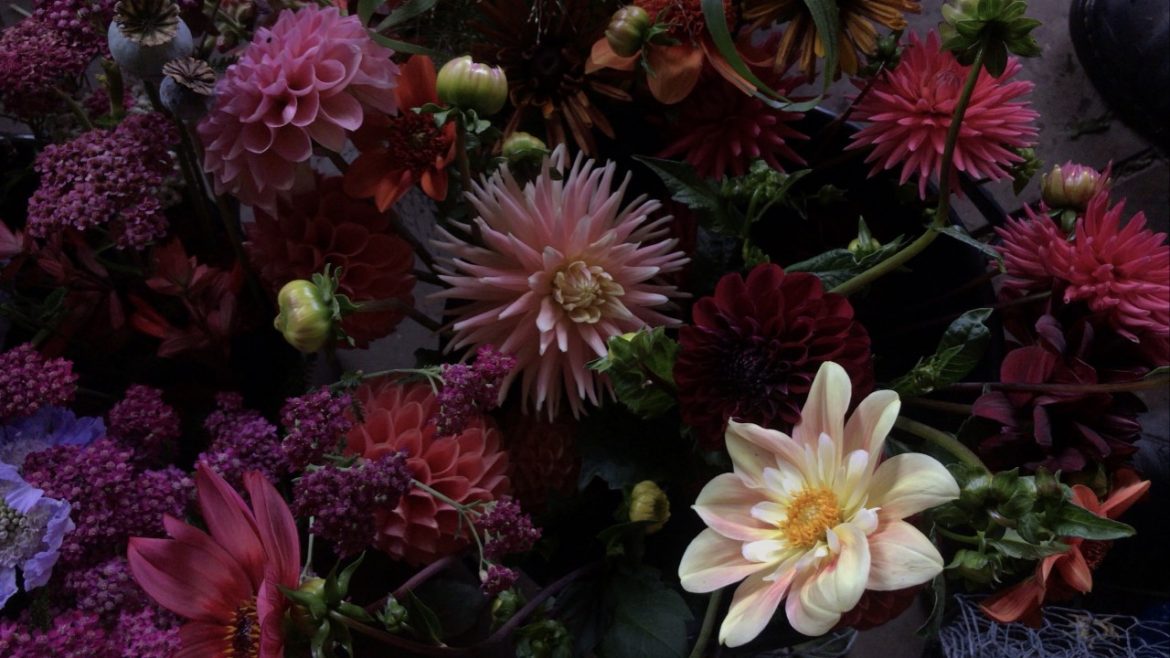Anna Taylor, owner of Anna’s Flower Farm in Audley End, shares what’s going on in the garden this month
Predictably, September conjures up a back-to-school analogy. And with gardening, it certainly is a good comparison. I may have said once or twice that I believe the gardening year starts again properly in September – but as a child, I was not quite as excited about going back to school as I am about planning my gardening for the next year!
It’s a good month to consider what changes or improvements I want; a vision for the 2022 garden, while considering the ‘lessons learnt’ from this year. I picked up an exercise in review from a friend who was a global strategist for a very impressive company. He walked around with a notebook in his hand or back pocket, whipping it out regularly to make notes about visions and ‘lessons learnt’. I’ll give you some of the highlights.
First – a little trite, but worth repeating – the virtues of stoic patience, rewarded with delayed gratification. Sitting in the studio as I write, I look down the long border and can see the bed finally taking shape, three years later, in the way I had anticipated as we began to garden it in 2018. Nothing happens overnight.
The soil was awfully neglected over many decades, so I planted what I knew could cope in hot, dry, free-draining sandy soil. Whenever I have the compost, I spread it around the plants – but only in winter, as the bed really is quite inaccessible right now, with large swathes of salvias, echinops, guara, asters and persicaria. It is rarely watered and, this year, after a good mulch of compost, the perennials are growing well. I know that next season’s display will be even better.
This year, after a good mulch of compost, the perennials are growing well. I know that next season’s display will be even better
A review of previous ‘lessons learnt’ tells me that perennials have cycles. Short-lived ones – like achillea – sown from seeds in their first year flower well, but in the second, they are fantastic. Thereafter, they lose oomph and seem to regress. Best to lift these in the autumn, split and replant elsewhere, or even compost, as you have sown new ones for seed. Others, like the persicaria, lady’s mantle and asters, are much longer-lived, but again seem to bloom best the year after lifting and splitting. I don’t worry about moving these plants, just reduce them a bit, put back into position and give some plants away.
Another observation is that you can never predict which of your ‘reliable’ self-seeders are actually going to reliably self-seed one year to the next. In 2019, we had so much nicandra – a very unusual, tall green plant with tiny black freckles on the leaves. An innocuous lilac flower gives way to green, then blackened lanterns. We strip the leaves off the stems to highlight the dangling puffs and these look fantastic with late-flowering dahlias and grasses, and are a ‘reliable’ talking point. This year, I only had a few seedlings, and these popped up in a bed of annual chrysanthemum I was so excited about – but I had to sacrifice these for the ‘shoo-fly plant’, as it is called in America. The self-sown atriplex is magnificent and there is a lot of panicum ‘frosted explosion’, a great grass that looks like a fibre optic and works well between late-summer flowers, either in the border or the vase.
A garden is maturing well when plants are flowering and mingling together like a tapestry, and there are happy self-seeders you can move around to fill gaps and create interesting combinations.
From my notes and photos, it’s clear these gardens are different landscapes one year to the next. I have loved this year’s, and am already ordering seeds to add to the next one. September is a lovely place to be, basking in the warm glow of the summer, surrounded by the tall growth and sowing the beginnings of next year’s garden.

